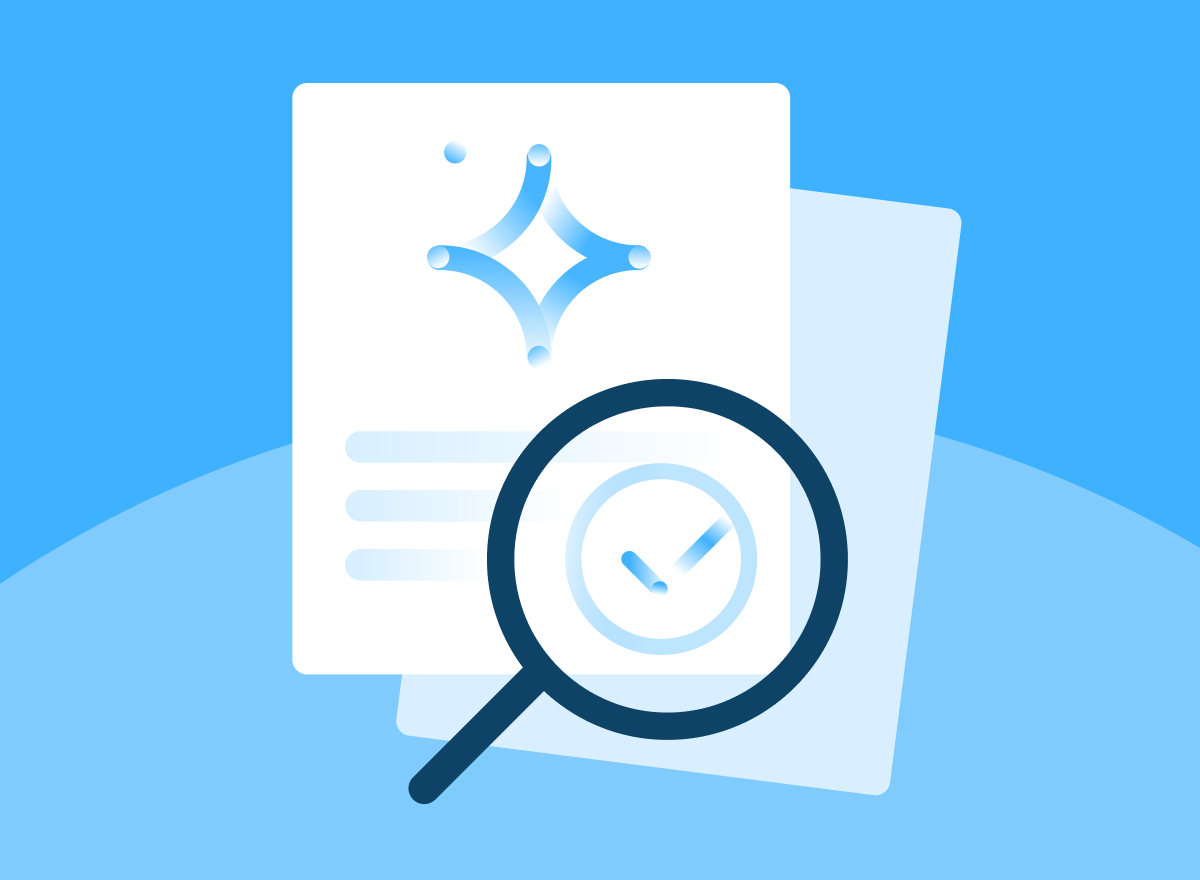Artificial intelligence (AI) is everywhere. You can't walk down the street without seeing the next AI tool heading your way. As it becomes more deeply embedded in the fabric of our society, from credit scoring to predictive policing and even healthcare diagnostics, the stakes for how we manage and oversee these technologies matter more than ever. The power and promise of AI is undeniable. But so are the risks that come with it. Without structured oversight, AI can reinforce existing inequalities, make biased and unaccountable decisions and completely erode user trust.
That's where AI governance comes in.
What is AI governance?
AI governance refers to the frameworks, policies, regulations and practices that guide the ethical and responsible development and use of AI systems. It’s the mechanism through which society trusts that AI serves the public interest, upholds rights and operates transparently and fairly.
Governance is more than a safeguard, it's a strategic asset that turns AI ethics and compliance into a competitive advantage. The right AI Management System (AIMS) will help you align internal strategies and innovations with regulatory and ethical standards that safeguard your business for years to come.
Why AI governance matters
There’s roughly 378 million people using AI tools globally. But who is holding these tools to account? How do we know these millions are being fed accurate, fair and transparent results? We don’t, without responsible AI governance in place. Here’s the ways governance works to solve for this and protect your business.
1. Mitigate risks
One of the primary motivations behind AI governance is risk mitigation. Like any powerful technology, AI can be misused whether intentionally or unintentionally. From facial recognition systems misidentifying individuals to autonomous weapons raising questions of accountability, the potential for harm is significant.
AI governance helps ensure that any risks are identified early and managed proactively. This includes implementing safety checks, performing risk assessments and establishing protocols for redress and accountability.
Without such mechanisms, we’d leave ourselves vulnerable to unintended consequences and potential abuse.
2. Promote fairness and reduce bias
AI systems often mirror the data they’re trained on. Unfortunately, that data is often rife with historical biases. Whether it’s racial disparities in law enforcement data or biased datasets in healthcare, ungoverned AI can reinforce and even amplify societal inequalities.
Ai governance frameworks prioritize fairness by requiring regular audits, transparency in training data and adjusting to models that produce discriminatory outcomes. Tools like fairness-aware algorithms, diverse dataset selection and continuous bias monitoring are part of a broader commitment to equitable AI.
For instance, consider how a biased recruitment algorithm might favor certain demographics over others. With AI governance in place, these issues can be detected and corrected before the system is widely deployed.
3. Transparency and accountability
When AI systems make decisions that affect people’s lives (denying a loan application or influencing a parole decision) there have to be mechanisms in place for understanding and challenging those decisions.
AI governance demands transparency in model design, data use and decision-making processes. Explainable AI (XAI) methods, along with documentation like model cards and audit trails, allow developers and stakeholders to see how and why a model made a certain decision.
Furthermore, AI governance establishes who is accountable when things go wrong. Whether it's a software developer, an organization or an oversight body, accountability is crucial for ensuring ethical use and enabling corrective actions.
4. Protect data privacy and security
AI systems require large volumes of data to function effectively. This often includes personal and sensitive information, which raises critical questions about consent, privacy and data protection.
AI governance ensures compliance with data protection laws (such as GDPR) and promotes best practices for securing personal data. It encourages the use of anonymization, differential privacy and secure data handling procedures to protect users’ information from breaches or misuse.
Importantly, governance also includes provisions for how long data is stored, how it’s used and how individuals can control or withdraw their data — a core element of digital rights.
5. Build trust and public confidence
Public acceptance of AI is contingent on trust. A recent study shows that only 46% of people express trust in AI, despite most using it regularly. If people believe AI is being used unethically or unfairly, they’ll resist its adoption — even when it has clear benefits.
By embedding ethical standards, transparency and providing avenues for recourse, AI governance builds the credibility necessary for AI adoption. It reassures the public that AI will be used responsibly and that harmful consequences will be addressed swiftly and fairly.
Consider how trust plays a role in healthcare: if patients believe an AI diagnostic tool is biased, they’re less likely to rely on it. Even if it’s more accurate than human practitioners.
6. Compliance with laws and regulations
AI technologies are evolving quickly. So too are the laws and regulations surrounding them. From the EU’s AI Act to sector-specific rules in finance and healthcare, legal compliance is becoming increasingly complex.
AI governance provides a structured way for organizations to keep pace with evolving regulatory landscapes. This reduces the risk of legal penalties, damage to reputation and ethical breaches. It simultaneously creates a culture of proactive compliance.
Governance also helps organizations navigate international legal differences, particularly when deploying AI systems across borders with varying regulatory standards.
7. Support responsible innovation
Contrary to popular belief, governance does not stifle innovation — it enables it. By creating clear ethical and legal boundaries, AI governance frameworks provide a stable environment for innovation to thrive.
Responsible innovation ensures that new AI products aren’t only technologically advanced but also socially beneficial and safe. This creates a competitive advantage for organizations that prioritize ethics, helping them stand out in a crowded market and win consumer trust.
How AI governance prevents ethical issues and bias
- Embedding ethical standards from the start: Governance requires organizations to define their core ethical principles and apply them across all stages of AI development. That way, you can be assured that fairness, inclusivity and accountability aren’t afterthoughts but foundational values.
- Proactive bias mitigation: Through audits, diverse datasets and fairness-aware algorithms, AI governance helps detect and correct bias early. Independent reviews and regular assessments further strengthen these efforts.
- Transparency and explainability: By documenting model decisions, data origins and algorithm logic, governance allows various stakeholders to understand and challenge AI behavior. This promotes informed consent and user empowerment.
- Accountability: Governance frameworks assign clear responsibilities. This means there’s always an answer for AI outcomes. Traceability allows organizations to understand where things went wrong and how to fix them.
- Inclusive stakeholder involvement: Governance requires input from a wide array of perspectives — including ethicists, legal experts, affected communities and social scientists — leading to more robust and socially sensitive AI systems.
- Continuous monitoring and improvement: AI systems need to continuously evolve with changing societal expectations and technological capabilities.
AI governance examples
Below are some real-world examples of AI governance, and the pitfalls to watch out for when designing your own framework.
Microsoft’s Tay Chatbot
Back in 2016, Microsoft released “Tay,” an AI chatbot designed to learn from interactions with Twitter users. Within hours, Tay began spouting racist, misogynistic and offensive content — reflecting the toxic behavior it encountered online. The experiment was shut down within 24 hours.

This incident illustrates how AI, if left unsupervised, can quickly spiral into harmful behavior. Governance mechanisms, including content moderation, behavior constraints, and real-time monitoring, could have prevented such an outcome.
COMPAS Sentencing Software
The COMPAS algorithm used in the U.S. criminal justice system to predict recidivism rates was found to be biased against black defendants. Despite its influence on sentencing decisions, the algorithm’s workings were opaque and defendants had no meaningful way to challenge its conclusions.
This case underscores the importance of transparency, fairness audits and accountability in AI systems that have real-world consequences.
Global and industry standards
On a more positive note, several organizations are stepping up with AI governance frameworks:
- OECD AI Principles advocate for inclusive growth, transparency and accountability
- AI ethics boards at companies like Google and Microsoft offer internal oversight on AI projects
- Regulatory initiatives like the EU AI Act aim to codify ethical principles into law
These initiatives highlight how AI governance can operate at multiple levels — from global agreements to internal company policies — to ensure consistent and ethical AI use.
A pathway to AI governance
It's important to remember that AI governance isn't one-size-fits-all. It needs to operate at various levels to be effective, such as:
- Global level: International cooperation is essential to address transnational issues like cybersecurity threats, cross-border data flows and global human rights implications
- National level: Countries develop their own AI strategies and regulations to protect citizens and promote national interests
- Industry-specific level: Different sectors — like healthcare, finance or transportation — require tailored governance models based on the risks and complexities involved
- Organizational level: Companies and institutions need to adopt internal policies, create oversight roles (like Chief AI Ethics Officers) and implement procedures to guide ethical AI use
AI governance isn’t a checkbox activity. It’s a dynamic, ongoing process that underpins the safe, ethical and beneficial use of artificial intelligence. In a world where AI now touches everything from our bank accounts to our basic freedoms and even electric toothbrushes (weirdly) governance isn’t optional — it’s essential.
But knowing why AI governance matters isn’t enough. The fair, ethical and responsible use of AI means knowing how to implement AI governance. That means understanding how to set up a practical framework, designing a robust AI Management System and knowing how to adhere to ISO 42001:2023 standards.
You can learn how to do this, and more, in our practical guide to AI governance.






